


BREAKING ANCIENT AZTEC NEWS

Posted on by mikeruggeri
April 17, 2023
INAH archaeologists have surmised that the large number of female remains on the great skull rack in the Aztec capital of Tenochtitlan are related to the origin myth of Huitzilopochtli. The skull rack is dated to the reign of Ahuzotl from 1486-1502 He doubled the size of the Aztec empire during his reign.
The myth of Huitzilopochtli, the solar and war deity of the Aztecs, includes the great confrontation he had with the lunar goddess Coyolxauqui. There are 655 human skulls on the skull rack. 38% of them are females. They were probably female warriors or pregnant women who had a stillbirth. Female sacrifices recreated the path of Coyolxauqui to Serpent Mountain (Mount Coatepec) where she attacked her mother Coatlicue. Huitzilopochtli was in Coatlicue’s womb, and sprang fully armed from the womb of his mother and threw Coyolxauqui down the side of the mountain.
Heritage Daily has the INAH report here:
Mike Ruggeri’s Ancient Aztec News
Researchers have discovered that a straight stone causeway on Mount Tlaloc, an extinct volcano, aligns with the rising sun on February 23/24. Mount Tlaloc is in the State of Mexico, where a shrine complex was built by the Mexica people. It was associated by the Aztecs with the rain god Tlaloc. And was seen as the heavenly home of Tlaloc, Tlalocan. Great rituals, offerings and human sacrifices were offered to Tlaloc at the beginning of the rainy season.
If an observer stands in the lower part of the causeway looking upwards on February 23/24, they will see the sun riding exactly in the middle of the path. The Aztec date of the New Year is February 23. They used this date to keep their agricultural calendar in line with the solar year.
The research is published in the Proceedings of the National Academies of Sciences (PNAS)
The full research paper is here; PNAS
https://doi.org/10.1073/pnas.2215615119
Heritage Daily has the report here;
https://www.heritagedaily.com/2023/01/ruins-on-mount-tlaloc-are-an-ancient-observatory/145743
Mike Ruggeri’s Ancient Aztec News
A statue of the Aztec deity Xipe Totec (the Flayed God), excavated in the Moyotlan quadrant of the Aztec capital of Tenochtitlan, will go on display at the Templo Mayor museum in Mexico City. Xipe Totec was the patron god of that Aztec quadrant. It is 27 inches high, carved from andesite. It is missing its shield. He wears a shirt of flayed skin from a sacrificed victim. It was discovered last year during excavations on Las Delicisas street in downtown Mexico City. It was buried under adobe fill, hidden from Spanish invaders.
The restored sculpture is now on display in the lobby of the museum where it will remain until April 2nd.
History Blog has the report here
http://www.thehistoryblog.com/archives/66147
Mike Ruggeri’s Ancient Aztec News
https://aztecnews.tumblr.com
July 28, 2022
INAH has uncovered a 39 inch sawfish blade in a stone box at the Templo Mayor. The box also contained 11,800 other ceremonial objects. This is the largest of the 78 sawfish blades found so far. The Aztecs revered the fish as a hybrid of sea and earth. Earlier in 2018, they found the carcass of a wolf dressed in gold armor. The wolf was given ear and nose ornaments and a pectoral of gold. It symbolized a human warrior with its head facing west as a companion of the sun in its journey to the underworld in the evening
Archaeology.org has the report here;
https://www.archaeology.org/issues/317-1811/trenches/7060-trenches-mexico-sawfish-blades
And the earlier wolf report here:
https://www.archaeology.org/issues/282-features/top10/6170-mexico-aztec-wolf-burial
Mike Ruggeri’s Aztec News
June 25, 2022
INAH has uncovered 2,500 wooden objects at the foot of the Templo Mayor in Mexico City. INAH says they have found masks, headdresses, sceptres, pectorals, darts, figurines, dart launchers, earrings, jars, and numerous wooden offerings that the priests deposited to consecrate the site to the Aztec gods. The finds were stabilised using synthetic sugars (lactitol and, later, trehalose) which prevents the breakdown of the wood by microorganisms and fluctuations in relative humidity.
The objects have survived due to the anaerobic conditions in the soil and the high level of humidity that has persevered them for more than 500 years. The researchers applied modern methods of conservation in which the finds were stabilised using synthetic sugars (lactitol and, later, trehalose) which prevents the breakdown of the wood by microorganisms and fluctuations in relative humidity.
The finds are then rinsed in water and placed inside a heat chamber with temperatures of 50°C. This slowly dries the wood and allows the controlled crystallisation of sugars that generates a thickening of the cell walls at a microscopic level.
Many of the objects have traces of colours such as blue, red, black, and white pigment on the surface.
Excavations of the ritual deposits have also uncovered botanical remains such as flowers, birds, mammals and marine animals, sea cucumbers, copper and gold objects, and flint and ceramic pieces.
Heritage Daily has the report here;
https://www.heritagedaily.com/2022/06/thousands-of-wooden-objects-and-offerings-recovered-from-the-aztec-templo-mayor/143896

An Aztec dwelling has been uncovered during construction in Mexico City. It dates to 1200-1520 CE. It spans 4,300 square feet. It was part of a residential and agricultural center with channels and a jetty used for chinampas farming in floating gardens. Funerary vessels were found containing the remains of infants, burials with an offering of censers, whorls and spinning tools. A stone statute of a man wearing a loincloth which is 23.5 inches tall.
Live Science has the report here:
https://www.livescience.com/aztec-house-discovered-mexico

The Aztecs had a 52 year cycle and a 260 day year. At the end of a 52 year cycle, the New Fire Ceremony took place.
Every 52 years, the inhabitants of Tenochtitlan threw away images of their gods and let the fires of their homes and temples go out. Priests would walk from the Templo Mayor (or Main Temple) to a mountain called Huixachtlan (also known as Cerro de la Estrella), on the eastern bank of what was then Lake Texcoco. There, they performed a ceremony to light the new fire. If the new fire did not alight, the belief was that the world would end – the stars would turn into monsters and devour humankind. Five days before the ceremony, the people destroyed all their household belongings, fasting and crying as they waited for the catastrophe.
The remains of one of the last New Fire ceremonies have been discovered by INAH. The investigators uncovered objects such as cajetas (a type of bowl), molcajetes (a stone tool similar to a mortar and pestle) and clay figurines.
“The pieces were found in San Fernando pantheon near San Hipólito church, in the old neighborhood of Cuepopan, which adjoins Tlatelolco, where Guerrero neighborhood is now located.
During the ceremony, the inhabitants of Tenochtitlan would throw away the figures representing deities from their home altars; and destroy all their belongings – clothes, dishes and even the tenamaztli (a sacred stone stove). Everything was burnt or thrown into ditches.
Pregnant women were locked up in farmhouses out of fear that they would turn into wild animals and children were made to walk and stay awake for fear that they would fall asleep on the fatal night and turn into rats. The house was also completely cleaned, with everything put in order, and the fires were put out, leaving complete darkness.
In the precise moment the stars passed the meridian, the priests took a wooden tool and lit a fire in the open chest of a victim who had been sacrificed for this purpose. Priests, caciques (a type of prince) and the common people became delirious with happiness. Special runners lit torches with the fire and relit the fires at the altars in the temples of all the local people.
If the world didn’t end and the stars did not turn into deadly monsters, the Mexica people would cheer up, clean up their homes, restore their temples and make new tools. As an extra sign of their appreciation, they would hold large feasts with special food and sacrifices – both of their own blood and that of their prisoners.
El Pais has the report here:
https://english.elpais.com/usa/2021-12-18/remains-from-aztec-new-fire-ceremony-discovered-in-mexico-city.html

Archaeologists excavating at the Aztec skull rack in Mexico City have uncovered 119 new human skulls in the structure discovered five years ago. This brings the total of skulls to 600. Three children’s craniums were uncovered in this excavation. The tower of skulls also contains women’s skulls. Skulls were found in smaller racks around the Aztec capital of Tenochtitlan in a succession of rings.
The larger skull racks was built in three stages between 1486-1502.
Smithsonian Has the report here;
https://www.smithsonianmag.com/smart-news/new-find-brings-skulls-discovered-aztec-tower-over-600-180976543/
Mike Ruggeri’s Toltecs and Aztecs
http://mikeruggeristoltecsandaztecs.tumblr.com
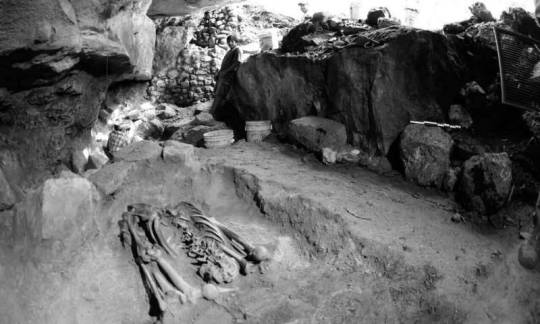
Vera Tiesler and Guilhem Olivier have published the results of their Mesoamerica heart extraction in Current Anthropology; “Open Chests and Broken Hearts: Ritual Sequences and Meanings of Human Heart Sacrifice in Mesoamerica.”
They studied anatomical analysis of skeletal evidence and compared it with systematically checked historical sources and over 200 instances of ceremonial heart extraction in codices. They focused on the location of openings created in the chest to allow for the removal of a victim’s heart and blood. They examined the resulting fractures and marks in articulated skeletons to infer about the nature of the entry wound and the potential instrumentation used.
Three distinct heart extraction methods were used; cutting directly under the ribs (subdiaphragmatic thoracotomy); making an incision between two ribs (intercostal thoracotomy); or by horizontally severing the sternum in order to access the heart (transverse bilateral thoracotomy).
The reason for this practice was as a source of “vitalizing matter,” or food for the gods. Hearts and blood were offered as sustenance to deities representing the sun and the earth in recognition of their sacrifices during the creation of the universe. Data–including linguistic analysis of ancient Mesoamerican terminology–reinforce suggestions that these rites served as acts of obligation, reciprocation, and re-enactment.
News360 has the report here;
https://news360.com/article/526610248

INAH has uncovered a giant bas relief of the Aztec Golden Eagle in downtown Mexico City. The carved slab was part of a floor built during Motecuhzoma Ilhuicamina’s reign 1440 and 1469 CE. The art is part of the Templo Mayor complex, which includes the image of a raptor associated with Huitzilopochtli”s mythical life cycle and Tlaloc representing the water cycle and the regeneration of maize. The floor was progressively created between 1486-1502. Researchers are correlating the floor with Aztec codices. In Codex Borgia, a golden eagle stands on a mesquite, that was believed to grow from a flayed skin deity with knife-like feline feathers that look like human sacrifice knives. The bird of prey is related to war and sacrifice and is the sun’s shapeshifting spirit-related to Huitzilopochtli.
At the site of the Templo Mayor is the legendary place where the Aztecs saw the eagle sitting on a cactus and where they moved to own man island which became their capital, Tenochtitlan. And this Eagle represents that founding story.
INAH will lift the eagle to explore below and then replace it.
INAH has the report here;

INAH has uncovered an Aztec sweat bath (tamazcals) in the La Merced neighborhood of Mexico City. They were built for medicinal purposes, spiritual rituals and for women to giver birth. A house for the Aztec elite and Spanish tannery were also uncovered at the site. Mexica. Aztec style red motifs are on the walls of the house.
The sweat bath is fairly intact with a bathtub and a bench build into the wall
INAH says “An Aztec record says that a Mexica noblewoman named Quetzalmoyahuatzin regularly bathed in a temazcal before giving birth. Now that a sweat lodge like the one described in this record has actually been discovered, that written document is largely verified as fact.”
Research will continue at the site.
BBC News and Archaeology-World have the reports here with many photos;

INAH is uncovering the largest Pre-Hispanic house ever found inside present day Mexico City. It was discovered by maintenance workers. The 20ft by 26ft size of the foundation confirms it to be the largest pre-Hispanic house ever unearthed. The find is in the Azcatpotzalco neighborhood. This was the capital of the Tepanec dominion before the Aztecs took it over. INAH will be working in this area for some time. Stone walls have been found on the perimeter of the house.
The first phase of construction on the structure was between 1350-1519. There is a second phase whose dates are still undetermined. There are remains of residential structures also being uncovered nearby. The materials being used was of high quality, so elites lived here. There is some possibility that the residents built chinampas (floating gardens) in the space.
Express (UK) has the report here;
https://www.express.co.uk/news/world/1228507/aztec-history-archaeology-news-hispanic-mexico-city-south-america-latest
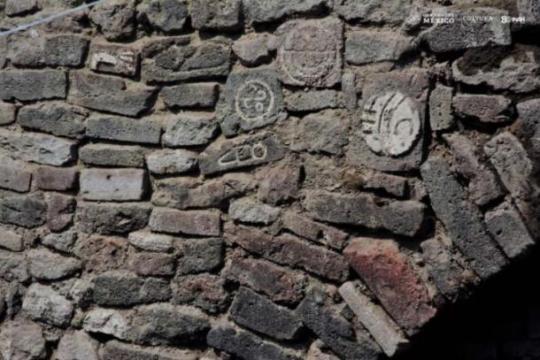
INAH has found 11 Mexica symbols in a tunnel in Ecatepec, North of Mexico City. Petroglyphs, stucco reliefs, a war shield, a bird of prey were among the symbols found. A Teocalli symbol dedicated to Tlaloc the rain god was on a central stone.
Moctezuma I built the dikes in the 15th century to control the flow of water into Tenochtitlan, the Aztec capital.
Indigenous folks from Ecatepec and Chiconautla worked on these dikes. Hernan Cortez destroyed the dikes and re-built them. The symbols have been removed for protection from further environmental damage and put in the Ecatepec community center. Replicas will be placed back on the walls of the tunnel.
Ancient Origins has the report here;
https://www.ancient-origins.net/news-history-archaeology/pre-hispanic-symbols-0012776

INAH Is continuing to study the skulls uncovered from the Templo Mayor Aztec skull racks (tzompantli) in downtown Mexico City. They have found 180 complete skulls. Thee victims were defleshed after death and the decapitation technique was clean. They have found that 75% were men, mostly of warrior age, 20% women and 5% children. Often the skulls were decorated and looked like eerie masks. Isotopic analysis of the skulls shows they were born all over Mesoamerica, but spent lots of time in Tenochtitlan before their death. So they were not foreigners. They often spent time with the families of their captors before they were sacrificed. They do display differing dental and cranial modifications. So this will lead researchers to more precise studies of the backgrounds of the sacrificed. New DNA studies will tell us about the genetic diversity of the Mesoamerica population at the time.
Science Magazine has the copiously illustrated report here;
https://www.sciencemag.org/news/2018/06/feeding-gods-hundreds-skulls-reveal-massive-scale-human-sacrifice-aztec-capital

The Aztecs ceremonially disfigured captive Spaniards at the Zultepec-Tecoaque site. The defenders there, in 1520, captured 15 Spanish males, 45 Cuban soldiers, 50 women, and 10 children. The women we’re strung up on skull racks. They were pregnant. They cut another woman in half near a dismembered child. The killings we’re re-enactments of creation myths. Cortes had to leave that group behind to put down an uprising in the Aztec capital. The horses, men and women were eaten, but the pigs the Spaniards brought were not eaten. The Aztecs were suspicious of them.
The town then took on the name Tecoaque, which means “the place where they ate them” in Nahuatl. The inhabitants abandoned the town when Cortes sent a punitive expedition. This research is part of Mexico’s new research and scholarship for the 500th anniversary of the conquest.
AP News has the report here;
https://apnews.com/3148029abd1445b68fa7a3c40c4677b1
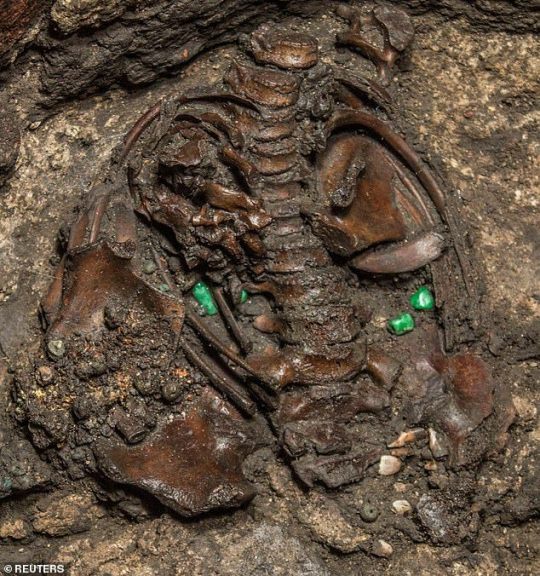
Archaeologists in Mexico have been looking for an Aztec royal burial for decades. New sacrificial offerings have been uncovered at the Temple Mayor site. They have uncovered the remains of a young boy dressed as a warrior and the Aztec war god and solar diety, and a set of flint knives with mother of pearl and precious stone inlays, a spear thrower and a carved wooden disk placed on the feline’s back that was the emblem of the Aztec patron deity Huitzilopochtli, the war and sun god, and bars of copal. The remains date to 1500 CE. The offerings were found in a stone box in the center of a circular platform. Only one tenth of the artifacts have been uncovered so far. Aquatic offerings include shells, bright red starfish and coral. A roseate spoonbill that is associated with warriors and rulers, which represent the spirits of warriors as they descend into the underworld. There is a starfish from the Pacific and jade from Central America.
This could be the royal grave of the Aztec emperor Ahuitzotl.
Mexico has cut the budget for the project by 20%. Workers on the find have not been paid since December. So work on this discovery is proceeding very slowly.
The Daily Mail has excellent photos of some of the finds;
https://www.dailymail.co.uk/sciencetech/article-6846405/Aztec-war-sacrifices-Mexico-point-elusive-royal-tomb.html

INAH has uncovered the remains of a 8 to 10 year old boy at the Temple Mayor. He was sacrificed to the Aztec god of war, Huitzilopochtli, in the late 15th century. He was found with body adornments and Huitzilopochtli symbols. The site is called Offering 176, and it was found under stone slabs near the Temple Mayor. The child was placed in a cylindrical box with volcanic rocks pasted with stucco. Of the 204 tombs found at the site so far, the configuration of the grave is unique. He was wearing jadeite jewelry from Guatemala, rectangular wooden earrings and a wooden breastplate called an anahuatl, bearing insignias of the gods Huitzilopochtli, Tezcatlipoca, Tlahuizcalpantecuhtli and Mixcóatl. The connection to Huitzilopochtli was further enhanced by the presence of the wings of a forest hawk, with their ocher and blue coloring, and the obvious location of the burial – in the west side of a Huitzilopochtli temple.
Archaeological News Network has the story here with good photos;
And further details are here in Ancient Origins;
https://www.ancient-origins.net/news-history-archaeology/aztec-child-sacrifice-021990

INAH has uncovered 26 graves at a site near Copilco, south of Mexico City. 11 of them are in the form of a truncated cone. The site was also used for storage of grains and artifacts. 130 figurines have been uncovered. Most depict pregnant women and also children painted in red, yellow and black. The site was protected from the huge volcanic Xictle explosion circa 245-315 CE. The site may have been a specialized site for infant care by the women at Copilco. INAH is undertaking chemical and pollen analysis to confirm the pre-natal care idea.
Archaeology News Network has the report here with great photos;
https://archaeologynewsnetwork.blogspot.com/2018/06/2700-years-old-graves-discovered-in.html

The latest Mexico 7.1 earthquake has unveiled an ancient shrine underneath the pyramid at Teopanzolco. The twin towered pyramid dedicated to Tlaloc and Huitzilopochtli has incurred structural damage to the floor of the top of the temple, leaving the floor sunken and bent. Recovery efforts are underway. And while working on the structure, INAH found a new sunken temple probably dedicated to Tlaloc. There may be a matching one to Huitzilipochtli next to it. They have found that the floor of the newly discovered temple was constructed using reddish volcanic rock and charcoal. They have found ceramic shards and an incense burner.
The new temple dates to 1150-12000 CE. The Teopanzolco pyramid was constructed by the Tlahuica culture, who were later conquered by the Aztecs, who continued work on the pyramid. The site was re-discovered by Zapata’s revolutionary forces in 1910, since it is near Zapata’s home base in Cuernavaca.
Smithsonian has the report here;
https://www.smithsonianmag.com/smart-news/earthquake-reveals-12th-century-temple-hidden-within-aztec-pyramid-180969619/
The Daily Mail has its usual excellent photographs and a video of the discovery;
http://www.dailymail.co.uk/sciencetech/article-5948063/Damage-Mexicos-killer-quake-reveals-unknown-temple-built-INSIDE-pyramid.html

INAH archaeologists found an Aztec human skull rack or tzompantli under a colonial period house behind the National Cathedral. The scale of it suggested it once held thousands of skulls. The racks were the size of a basketball court. They were likely built between 1486-1502. They also found skulls that had been stuck together with mortar on towers.
Several thousand skulls had to have been displayed on these structures. INAH has so far collected 180 almost complete skulls and thousands of skull fragments, which are now being meticulously studied. They show that the skulls were defleshed after death, and the decapitations were clean and precise.
75% of the skulls are males between 20-35 years of age. 20% were women and 5% were children. They were in good health. Some may have been slaves sold in markets for sacrifice. This is the same ration as the skulls found at the nearby Templo Mayor. Strontium and oxygen isotopes in their teeth show they are from all parts of Mesoamerica, and lived in the Aztec capital of Tenochtitlan for some time. Historical accounts show some captives lived with the families of the captors for some time.
The skulls also show intentional dental and cranial modifications that were varied according to the culture they lived in, before being transported to Tenochtitlan. Further scientific studies of the skulls can narrow down the specifics of this whole story by individuals, telling us a lot about the rituals all over Mesoamerica and their genetic diversity.
Science Magazine has the report here with many photos and a video;
http://www.sciencemag.org/news/2018/06/feeding-gods-hundreds-skulls-reveal-massive-scale-human-sacrifice-aztec-capital
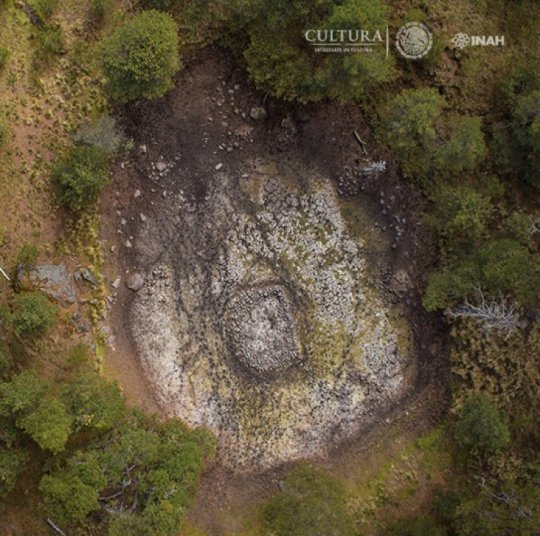
INAH has found a stone shrine in a pond that depicts the Aztec idea of the design of the universe. The shrine was found at Nahualac, near the Iztaccihuatl volcano. Ceramics, lithic, lapidaries were also found. The stones portray a miniature universe. The stones are placed so that they look like they are floating on the water. The Mexica creation myth saw a world of water. The earth monster, Cipactli, floated on the water, and from his body, the earth was created. INAH believes that there was a ritual control of water from nearby springs to irrigate the pond which made it appear that the structure was floating on the water. The structure evokes the primitive waters and the beginning of time.
The Nahualac site has two parts, the pond shrine and nearby areas with ceramics dedicated to the storm god Tlaloc.
International Business Times has the report here with photos;
http://www.ibtimes.co.uk/depiction-mythical-aztec-universe-discovered-natural-pond-near-mexicos-iztaccihuatl-volcano-1653737

INAH have uncovered an Aztec structure in the Plaza Pino Suarez in Mexico City. The structure is very close to the Ehecatl Temple inside the Pino Suarez metro station. This was within a calpulli or district of Cuezcontitlan which enabled fast and efficient distribution of agricultural products in the partialities of Teopan (also called Zoquipan or Xochimilca) and Moyotlan. There are fragments of Aztec III and IV ceramics (1430-1521) at the site.
INAH has the report here in Spanish;
http://www.inah.gob.mx/es/boletines/6331-hallan-vestigio-ceremonial-de-un-calpulli-mexica-en-la-plaza-pino-suarez
Mexico news Daily has the report in English with a good photo;
http://mexiconewsdaily.com/news/another-pre-hispanic-find-in-mexico-city/
Mike Ruggeri’s Toltecs and Aztecs
http://mikeruggeristoltecsandaztecs.tumblr.com
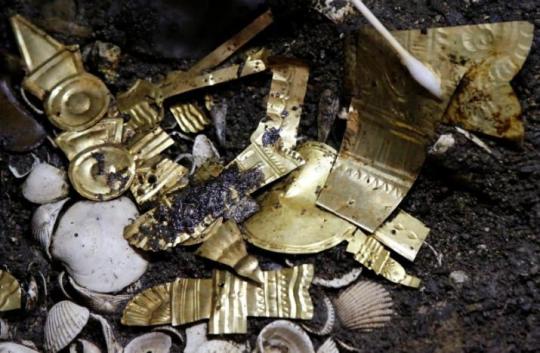
Mexican archaeologists have uncovered a wolf sacrificed by the Aztec, adorned with a rich array of gold, in downtown Mexico City. 22 pieces have been found including pendants, a nose ring, a chest plate. They were found in a stone box near the Temple Mayor. The wolf was placed over a layer of sacrificial knives. The wolf was facing west and represented the god of war, Huitzilopochtli. Wolves helped guide fallen warriors across a dangerous river in the underworld. The wolf was buried during the reign of Ahuizotl from 1486-1502.
Reuters has the report here with nice photos;
http://www.reuters.com/article/us-mexico-archaeology-aztecs-idUSKBN19S1RA

Archaeologists have found 650 skulls caked in lime near the Temple Mayor. They were placed in a cylindrical tower. These skulls were placed in one of the skull racks on display at Tenochtitlan. Skulls of women and children were found among the skulls. This was an unexpected surprise. Were the skulls of women and children displayed on skull racks?
The Guardian has the story here with photos;
https://www.theguardian.com/world/2017/jul/01/tower-human-skulls-mexico-city-aztec-sacrifices
And here is the same story in the Daily Mail with their usual display of many photos.
http://www.dailymail.co.uk/news/article-4658112/Tower-human-skulls-Mexico.html

A new major discovery of an Aztec Temple and Ballcourt have been excavated near the Zocalo in Mexico City. The excavation uncovered the foundations of a massive circular shaped temple dedicated to the wind god Ehecatl and part of a ball court. The structures were described in the Spanish chronicles. They also found 32 severed male neck vertebrae in a pile next to the court. These would have been the victims of the ball game ritual. The structures were built during the reign of Ahuizotl from 1486-1502. Mexican archaeologist Eduardo Matos said the top of the temple would have resembled a coiled snake with priests entering a doorway that was shaped as the serpent’s nose.
Numerous news stories on this discovery have appeared today. This one is from the Guardian, with photos;
https://www.theguardian.com/world/2017/jun/08/mexico-city-ancient-aztec-temple-ball-court
The same story was published in November 2016. Perhaps the Ball Court and the neck vertebrae are new details.
https://www.theguardian.com/world/2017/jun/08/mexico-city-ancient-aztec-temple-ball-court

INAH has uncovered an Aztec circular temple under a Mexico City demolished department store. The round temple was dedicated to Ehecatl Quetzalcoatl, as the wind god. It will be preserved behind a viewing window inside a shopping mall to be built in the site. Inside the temple, INAH found an infant, bird bones, obsidian, cactus spines and monkey and duck ceramics. White stucco remains on the temple.
The Guardian has the report here with a photo;
https://www.theguardian.com/world/2016/nov/30/mexico-temple-wind-god-archaeology-supermarket
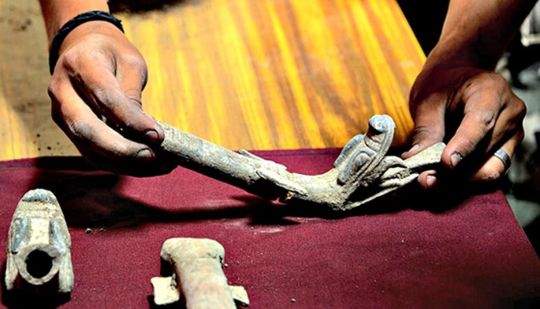
INAH has found 30 Aztec era incense burners at the site of Cuautitlan. The artifacts have polychrome handles and snake heads representing Xiuhcoatl as the fire serpent. They have also found graves and a temple at the site. The handles of the burners have balls of clay that emit a sound like rain when shaken. The site and offerings are dated to 1350-1519 CE. Cuauhtitlan was an Aztec tributary and trading center. The burials included 3 skulls and long bones. A stack of obsidian blades, black and red pots. A young girl was interred in a seated position. She was buried with dishes, whistles, and a mask of the God of death, Mictlantecuhtli.
Ancient Origins has the report taken from the INAH page, with photos of the finds and a video.

Resarchers are studying the 30 gruesome skull masks created by the Aztecs at the Templo Mayor. They have found that all were adult males between 30-45 years of age. Their dental record shows they were of high status and probably warriors. They may have been captured warriors or nobility from defeated towns. There were unmodifed skulls that show they came from poorer classes.
The Daily Mail has the report here with extensive photos;
http://dailym.ai/1spZrC1
Mike Ruggeri’s Toltecs and Aztecs
http://mikeruggeristoltecsandaztecs.tumblr.com

A new study by INAH of who was sacrificed at Tenochtitlan shows that many of the sacrificed were Mexica from the area and not all war captives from further afield. The skulls and teeth of six individuals who were sacrificed at the Great Temple of Tenochtitlan were studied. They were individuals who lived under the reign of Moctezuma II. The individuals studied were probably servants for the elite, and had lived at Tenochtitlan for at least six years. The article also mentions the recent finds of Aztec skull racks at the Great Temple which proves the assertions made in primary sources about the existence of these skull racks. A surprising find among these skull racks is one that has the skulls of the sacrificed mortared together into a circle, with all of the heads facing inward into a space. This find was a total surprise.
The Daily Meal has their usual great illustrated report on this discovery;
http://www.dailymail.co.uk/sciencetech/article-3417150/Did-Aztec-rulers-sacrifice-STAFF-Bones-reveals-victims-served-elite-killed-Great-Temple-Tenochtitl-n.html

INAH has found a tunnel like passageway that may lead to two sealed chambers at the Templo Mayor. The tunnel is sealed by a 3 ton rock. They had earlier found bones of eagles and two infant skulls in an offering box. It appears they were decapitated. Sacrifice knives were also found as well as other body parts at this place. INAH dug into the area and found the tunnel entrances. They will begin excavating the tunnels in 2016 to see if Aztec rulers may be buried there. If this is found, this would be the first discovery of Aztec rulers tombs.
US News has the report here;
http://www.usnews.com/news/science/news/articles/2015/12/01/mexico-experts-passageway-may-lead-to-aztec-rulers-tomb
INAH has a slide show of the finds here. (click on the tiny green camera icon under the cover photo;
http://www.inah.gob.mx/es/boletines/4948-revelan-hallazgos-durante-la-primera-mesa-redonda-de-tenochtitlan

A new discovery has been made at the Zultépec-Tecoaque archaeological site in Tlaxcala. INAH has found the skeleton of a high ranking Acolhua leader in a cistern, a full size throne made of volcanic rock, and a carved stone with the pictograph of Ometochtli or “Two Rabbit.” The site dates to 1200-1521 CE. The glyph of Two Rabbit is associated with pulque. Pulque was produced in this area. The buried individual was 25 years old. They have also found a cistern with the bones of three different infants that had been cooked or boiled and possibly eaten.
Mexico News Daily has the report here;
http://mexiconewsdaily.com/news/evidence-of-pulque-god-found-in-tlaxcala/
INAH has more details in their report with a slide show of the finds. (click on the little green camera icon under the photo).
http://www.inah.gob.mx/es/boletines/4933-hallan-entierro-de-personaje-vinculado-con-ometochtli-dios-del-pulque-en-tlaxcala
Earlier report I posted on surprising finds at this site;
Decapitated Spaniards from 1520 Convoy Uncovered at the site of Zultepec-Tecoaque
In 1520 CE, the Alcohua town of Zultepec-Tecoaque captured a supply convoy of 15 Spaniards and 45 food soldiers of Cuban and African descent, women and 350 Indian allies a year after the conquest of Tenochtitlan. The townspeople carved clay figurines of the captives, and sumbolically decapitated the figurines. The captives were then sacrificed and eaten. The captives were held in cells for six months and then all were slowly canibalized, to ask the gods for protection from them. The pigs the Spaniards brought were left uneaten. These would have been strange creatures to the invaded. The captives were torn apart and the meat removed from their bones. One woman was found dismembered with the skull of a one year old placed in her pelvis. Spanish valuables like majolica china, jewelry, spurs, stirrups were tossed into wells. A horse’s rib bone was carved into a musical instrument. The heads of the captives were placed on a skull rack. Cortes dispatched a punitive expedition. The townspeople then hid all of the remains of the Spaniards, which has allowed archaeologists to find the remains.
CTV News has the report here from INAH;
http://www.ctvnews.ca/sci-tech/excavation-of-mexican-site-reveals-decapitation-of-conquistadors-1.2602422

In 1520 CE, the Alcohua town of Zultepec-Tecoaque captured a supply convoy of 15 Spaniards and 45 food soldiers of Cuban and African descent, women and 350 Indian allies a year after the conquest of Tenochtitlan. The townspeople carved clay figurines of the captives, and sumbolically decapitated the figurines. The captives were then sacrificed and eaten. The captives were held in cells for six months and then all were slowly canibalized, to ask the gods for protection from them. The pigs the Spaniards brought were left uneaten. These would have been strange creatures to the invaded. The captives were torn apart and the meat removed from their bones. One woman was found dismembered with the skull of a one year old placed in her pelvis. Spanish valuables like majolica china, jewelry, spurs, stirrups were tossed into wells. A horse’s rib bone was carved into a musical instrument. The heads of the captives were placed on a skull rack. Cortes dispatched a punitive expedition. The townspeople then hid all of the remains of the Spaniards, which has allowed archaeologists to find the remains.
CTV News has the report here from INAH;
http://www.ctvnews.ca/sci-tech/excavation-of-mexican-site-reveals-decapitation-of-conquistadors-1.2602422

INAH archaeologists have found the main skull rack where the Aztecs displayed the severed heads of their sacrificed victims after their hearts were torn out on top of the main pyramid at the Templo Mayor in Mexico City. The skulls were all looking inwards. Their heads were cemented together to look inwards. This was a surprise. 35 skulls can be seen so far. Many more will be revealed as they dig deeper. A Spanish chronicle spoke of these cemented together skulls, but none had ever been found until now. The skull rack was buried under a three story colonial house in the city center. Archaeologists have been looking for the big skull rack since 1914, and this is probably the one that was sought. The skulls were hung on layered wooden posts after holes were driven through them to fit the wooden posts through the skulls.
The Daily Mail has the report here with their usual excellent photo display;
http://www.dailymail.co.uk/sciencetech/article-3205251/Mexico-finds-main-skull-rack-Aztec-temple-complex.html

At the site of Tlatelcomila, near Mexico City, the human bones of 18 men, women and children, dated to 700-500 BCE, show signs of cannibalism. Flesh was cut from their bones and their bones were broken at the time of death. Many of the boness had a yellow or red tinge to them. Researchers used powder x-ray diffraction, scanning electron microscopy, transmission electron microscopy, atomic force microscopy, and ultraviolet visible spectroscopy to take a close look at the bones. They found the bones had been cooked by grilling and boiling. The reddish color is from blood, but the boiled bones were cooked with chilis.
Trujillo-Mederos and colleagues’ full article, “Savoury recipes and the colour of the Tlatelcomila human bones,” can be found in early view at the journal Archaeometry.
(My note; The evidence of cannibalism at this site has been known for years. This is the first study to determine how the remains were cooked).
Forbes has the report here;
http://www.forbes.com/sites/kristinakillgrove/2015/05/20/ancient-mesoamerican-recipe-for-cooking-human-flesh-stuns-archaeologists/
A report from a few years back posted in Art Daily was about evidence of cannibalism in Tenochtitlan;
http://artdaily.com/index.asp?int_sec=11&int_new=67523#.VV11vmBkjR7

A team of researchers from North Carolina State University, the Centro de Investigación y de Estudios Avanzados del Instituto Politécnico Nacional-Unidad Mérida, El Colegio de Michoacán and Purdue University have been studying the independent republic of Tlaxcallan during the Aztec era. They focused on obsidian sources for Tlaxcala. The Tlaxcallan obsidian was mostly obtained from a source at El Paredon, just near the Aztec frontier. Why didn’t the Aztecs intervene to block that source from their Tlaxcallan enemy? Probably because the time and effort involved would not have been worth it, since other sources were available. The researchers used x-ray fluorescence on obsidian from Tlaxcallan and compared that to other obsidian sources in the area, including the Aztec’s main source at Pachuca.
The paper, “The Geopolitics of Obsidian Supply in Postclassic Tlaxcallan: A Portable X-Ray Fluorescence Study,” was published online March 25 in the Journal of Archaeological Science.
Archaeology.org has the report here;
http://www.archaeology.org/news/3116-150325-obsidian-blade-tlaxcallan